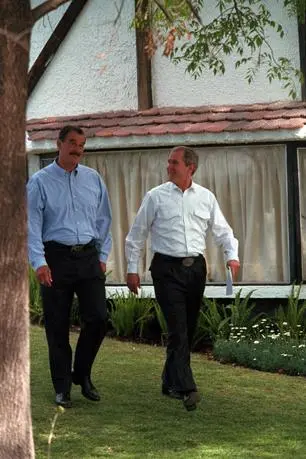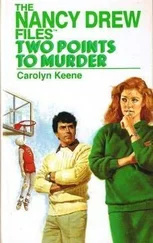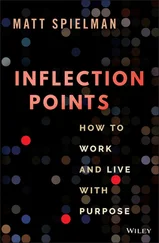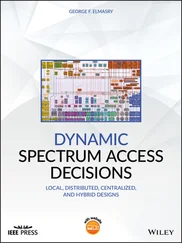A few hours later, his reply came across the fax: Dear George,Your handwritten note, just received, touched my heart. You are doing the right thing. Your decision, just made, is the toughest decision you’ve had to make up until now. But you made it with strength and with compassion. It is right to worry about the loss of innocent life be it Iraqi or American. But you have done that which you had to do.Maybe it helps a tiny bit as you face the toughest bunch of problems any President since Lincoln has faced: You carry the burden with strength and grace. …Remember Robin’s words ‘I love you more than tongue can tell.’Well, I do.Devotedly,Dad

The bombs that fell on Baghdad that night marked the opening phase in the liberation of Iraq. But that was not the first airstrike on Iraq to make news during my presidency.
In February 2001, I visited President Vicente Fox in San Cristóbal, Mexico. My first foreign trip as president was designed to highlight our commitment to expanding democracy and trade in Latin America. Unfortunately, news out of Iraq intruded. As we admired the serene vistas of Vicente’s ranch, American bombers struck Iraq’s air defense system. It was a relatively routine mission to enforce the no-fly zones that had been created after Saddam massacred thousands of innocent Shia and Kurds following the Gulf War.*

With Vicente Fox. White House/Paul Morse
Saddam fired off a barrage that lit up the Baghdad sky and grabbed the attention of CNN. When Vicente and I stepped out of his home for a press conference, a Mexican reporter began, “I have a question for President Bush. … Is this the beginning of a new war?”
The flare-up was a reminder of the deteriorating situation America faced in Iraq. More than a decade earlier, in August 1990, Saddam Hussein’s tanks blasted across the border into Kuwait. Dad declared that Saddam’s unprovoked aggression would not stand and gave him an ultimatum to withdraw from Kuwait. When the dictator defied his demands, Dad rallied a coalition of thirty-four countries—including Arab nations—to enforce it.
The decision to send American troops to Kuwait was agonizing for Dad—and frustrating to implement. The Senate voted to authorize military force by a slim margin, 52 to 47. A group of lawmakers presented Dad with a letter that predicted ten thousand to fifty thousand American deaths. Former President Jimmy Carter urged members of the Security Council to oppose the war. The UN voted to support it anyway.
Operation Desert Storm proved a stunning success. Coalition forces drove the Iraqi army out of Kuwait in fewer than 100 hours. Ultimately, 149 Americans were killed in action. I was proud of Dad’s decisiveness. I wondered if he would send troops all the way to Baghdad. He had a chance to rid the world of Saddam once and for all. But he stopped at the liberation of Kuwait. That was how he had defined the mission. That was what Congress had voted for and the coalition had signed up to do. I fully understood his rationale.

As a condition for ending hostilities in the Gulf War, UN Resolution 687 required Saddam to destroy his weapons of mass destruction and missiles with a range of more than ninety miles. The resolution banned Iraq from possessing biological, chemical, or nuclear weapons or the means to produce them. To ensure compliance, Saddam was required to submit to a UN monitoring and verification system.
At first, Saddam claimed he had only a limited stockpile of chemical weapons and Scud missiles. Over time, UN inspectors discovered a vast, haunting arsenal. Saddam had filled thousands of bombs, shells, and warheads with chemical agents. He had a nuclear weapons program that was about two years from yielding a bomb, much closer than the CIA’s prewar estimate of eight to ten years. When his son-in-law defected in 1995, Saddam acknowledged that the regime had been hiding a biological weapons program that included anthrax and botulinum toxin.
To keep Saddam in check, the UN imposed strict economic sanctions. But as outrage over Iraq’s invasion of Kuwait faded, the world’s attention drifted. Saddam diverted nearly two billion dollars from the Oil-for-Food program—which the UN had created to provide for the basic humanitarian needs of innocent Iraqis—to enrich his cronies and reconstitute his military strength, including programs related to weapons of mass destruction. As children starved, he launched a propaganda campaign blaming sanctions for the suffering.
By 1998 Saddam had persuaded key trading partners like Russia and France to lobby the UN to loosen the restrictions. Then he forced the UN weapons inspectors to leave the country. The problem was clear: Saddam had never verified that he had destroyed all of his weapons from the Gulf War. With the inspectors gone, the world was blind to whether he had restarted his programs.
The Clinton administration responded by launching Operation Desert Fox—a four-day bombing campaign conducted jointly with Great Britain and aimed at degrading Saddam’s WMD capabilities. In a primetime address from the Oval Office in December 1998, President Clinton explained: The hard fact is that so long as Saddam remains in power, he threatens the well-being of his people, the peace of his region, the security of the world. The best way to end that threat once and for all is with a new Iraqi government—a government ready to live in peace with its neighbors, a government that respects the rights of its people. …Heavy as they are, the costs of action must be weighed against the price of inaction. If Saddam defies the world and we fail to respond, we will face a far greater threat in the future. Saddam will strike again at his neighbors. He will make war on his own people. And mark my words, he will develop weapons of mass destruction. He will deploy them, and he will use them.
The same year, Congress overwhelmingly passed and President Clinton signed the Iraq Liberation Act. The law declared a new official policy of the United States: “To support efforts to remove the regime headed by Saddam Hussein from power in Iraq and to promote the emergence of a democratic government.”

By early 2001, Saddam Hussein was waging a low-grade war against the United States. In 1999 and 2000, his forces had fired seven hundred times at our pilots patrolling the no-fly zones.
For my first eight months in office, my policy focused on tightening the sanctions—or, as Colin Powell put it, keeping Saddam in his box. Then 9/11 hit, and we had to take a fresh look at every threat in the world. There were state sponsors of terror. There were sworn enemies of America. There were hostile governments that threatened their neighbors. There were nations that violated international demands. There were dictators who repressed their people. And there were regimes that pursued WMD. Iraq combined all those threats.
Saddam Hussein didn’t just sympathize with terrorists. He had paid the families of Palestinian suicide bombers and given sanctuary to terrorists like Abu Nidal, who led attacks that killed nineteen people at an Israeli airline’s ticket counters in Rome and Vienna, and Abu Abbas, who hijacked the Italian cruise ship Achille Lauro and murdered an elderly, wheelchair-bound American.
Saddam Hussein wasn’t just a sworn enemy of America. He had fired at our aircraft, issued a statement praising 9/11, and made an assassination attempt on a former president, my father.
Читать дальше













